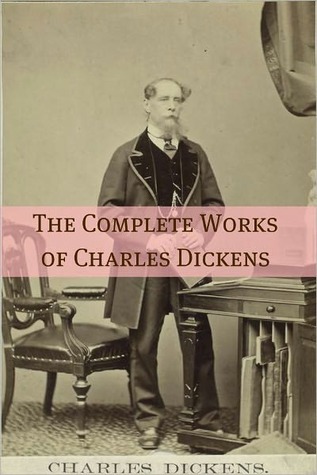
The Complete Works of Charles Dickens
Book Description
Enter a world where dark alleys whisper secrets and bustling streets pulse with the dreams and despair of the ages. Dive into the lives of unforgettable characters—from the desperate orphan to the cunning criminal, from the resilient survivor to the cynical aristocrat. Each tale grips the heart, unveiling the raw truths of humanity, betrayal, and redemption in a society teetering on the brink. With a masterful blend of wit and emotion, this collection immerses readers in a vivid tapestry of Victorian life. What will you uncover in the depths of these timeless stories that echo across generations?
Quick Book Summary
The Complete Works of Charles Dickens encompasses the remarkable legacy of one of literature’s greatest storytellers. Across a diverse array of novels, novellas, and short stories, Dickens crafts vivid portraits of Victorian England—a society rife with poverty, injustice, and hope. His narratives follow unforgettable characters such as Oliver Twist, Ebenezer Scrooge, Pip, and David Copperfield, whose struggles mirror the complexities of the human condition. With biting satire, compassionate social critique, and enduring humor, Dickens explores themes of social reform, class disparity, resilience, and redemption. This collection not only entertains but also challenges readers to confront the realities of its time, offering insights that resonate powerfully with contemporary audiences.
Summary of Key Ideas
Table of Contents
Social Injustice and Reform
Dickens’s works are celebrated for their unflinching examination of social injustice. Stories such as "Oliver Twist" and "Bleak House" reveal the harsh realities faced by orphans, debtors, and marginalized communities, exposing the failures of workhouses, courts, and bureaucracy. Through his vivid descriptions and passionate advocacy, Dickens challenges readers to confront entrenched class disparities and cries for reform, beckoning society toward empathy and change.
The Resilience of the Human Spirit
At the heart of Dickens’s novels are characters who, despite adversity, demonstrate extraordinary perseverance. Figures like David Copperfield and Little Dorrit exemplify grit, growing and evolving as they navigate personal and societal challenges. Their journeys highlight the strength and dignity possible even in the darkest circumstances, inspiring readers to believe in the possibility of overcoming hardship.
The Corrosive Effects of Wealth and Greed
Dickens probes the seductive allure and destructive potential of wealth, as seen in works such as "Great Expectations" and "Our Mutual Friend." Characters driven by greed, such as Ebenezer Scrooge or the Veneerings, often become isolated and morally bankrupt. Through their stories, Dickens critiques a society obsessed with fortune and status, suggesting that true fulfillment lies beyond material accumulation.
Redemption, Forgiveness, and Personal Transformation
A recurring theme in Dickens’s oeuvre is the transformative power of redemption and forgiveness. Figures who seem lost—like Scrooge in "A Christmas Carol"—embark on journeys of self-realization, ultimately embracing compassion and change. These narratives are imbued with hope, emphasizing the human capacity for growth, the importance of making amends, and the liberating effects of forgiveness.
The Power of Community and Compassion
Throughout his works, Dickens underscores the importance of community and compassion. Acts of kindness and solidarity—from friendships to grassroots activism—offer a counterbalance to societal indifference. Whether in the bustling neighborhoods of London or the humble rural villages, Dickens’s worlds pulse with the healing potential of understanding and collective responsibility, leaving a legacy of enduring relevance.
Download This Summary
Get a free PDF of this summary instantly — no email required.





